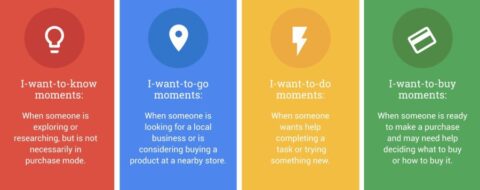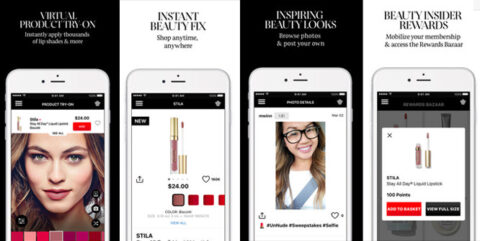In today’s evolving online landscape, it’s more important than ever for brands to create meaningful connections with their customers. Upon successful optimisation of their digital approach, brands can build these connections in as little as a micro-moment.
What is a micro-moment?
A micro-moment is a moment of intention when a consumer turns to their technological device to act on a need to learn something, do something, discover something, watch something or buy something. Or, as Google describes it, the four ‘game-changing moments that really matter’:

The concept of micro-moments is game-changing for marketers. Traditional marketing tells us that the consumer decision journey is linear, as it travels through the awareness, consideration and decision phases. However, as we move through a digital world where consumers are never far from a wealth of information on their smartphones, the consumer decision journey is more dynamic than ever as it is fragmented into hundreds of micro-moments.
As we act on our needs in these micro-moments, our expectations are high and our patience low. This means that the quality and relevance of marketing is more important than ever. In order to compete in these moments of unpredictability and get the most out of micro-moments in 2020, your brand should:
- Identify your customers’ micro-moments
In the era of ‘shopping never sleeps’, mobile phones have reshaped micro-moments. Consumers are now able to turn to their phones in search of immediate answers to questions like “how to make a chocolate cake” instead of rifling through their gran’s old cookbook. In using digital to deliver against consumer needs, brands should utilise keyword research tools and social listening to help better understand when, where and how their consumers are researching and making purchase decisions. This understanding then allows brands to optimise products and services in real time to align with consumer needs.
- Show up in these moments
Once you have figured out where and when your customers are showing up, you need to be there too. By creating a comprehensive strategy that works across multiple channels, you can show up for your audience when and where it’s important in order to successfully win over consumers. An effective approach to leveraging micro-moments involves being available, responsive and supportive in these moments.
- Deliver relevant content
Simply being there is no longer enough: you need to create content that provides answers to the questions your customers are asking. Building relevant content involves creating a 2-way conversation between you and your customers. Consumers today are seeking a deeper level of engagement, which can be a challenge for brands. In overcoming this challenge, marketers can take advantage of technology platforms which integrate all marketing functions, including data integration, integrated platform analytics and campaign deployment, such as Social Bakers.
- Make it easy for consumers to make their purchase
Simplify your purchase process to as few clicks as possible. Automating the customer journey allows brands to minimise the chance that consumers will drop off before reaching the purchase stage. However, it is key that you establish a strategy to regain the attention of those consumers who do drop off – for example, through retargeting campaigns and personalised messaging. Furthermore, brands should acknowledge that the consumer journey does not end at the purchase stage. In fact, a study by Autopilot found that brands who stay in touch with consumers every two to four weeks generate twice as many leads as brands that don’t.

- Measure every moment that matters
The path to purchase is now fragmented and unpredictable. Therefore, it’s key that you evaluate your results to reflect this by measuring across every touchpoint.
Sephora is just one example of a brand which has realised the power of their consumers’ I-want-to-buy micro-moments. The brand has successfully understood how they can show up for their consumers across online and in-store touchpoints as they reach the purchase decision stage. At the decision stage, consumers shopping in-store would turn to their smartphones to read product reviews in order to decide between products. Sephora responded to this by creating an app which allows consumers to easily access product reviews and tutorial videos simply by scanning a product when in store. Through this medium, Sephora has successfully answered questions that consumers didn’t even know they had.

Micro-moments, and the new dynamic consumer journey, are gaining momentum. Therefore, it’s key that your brand integrates these behaviours into a reconstructed marketing strategy in order to remain competitive in today’s online landscape.
Wondering how your brand can effectively utilise micro-moments?
If you’re looking for digital marketing support, we’re here to help – so get in touch today!

